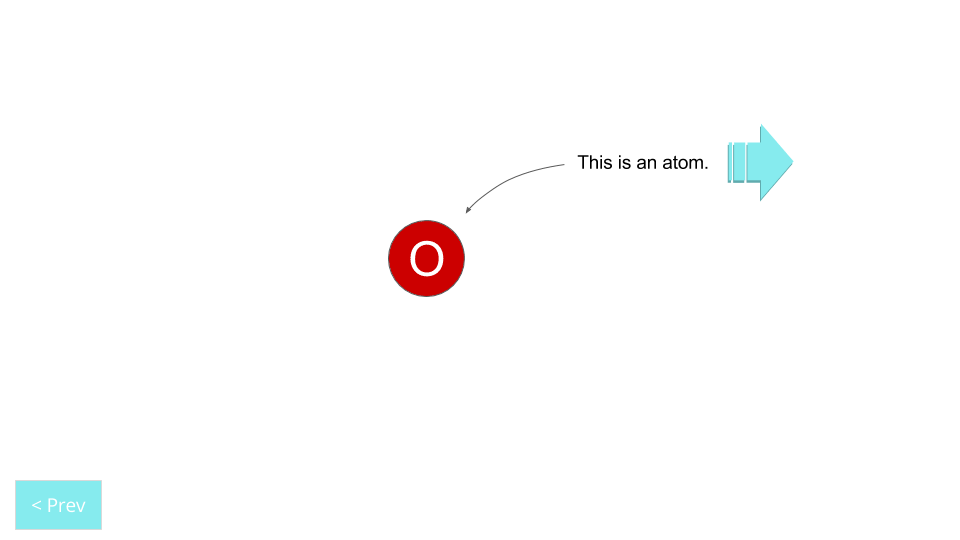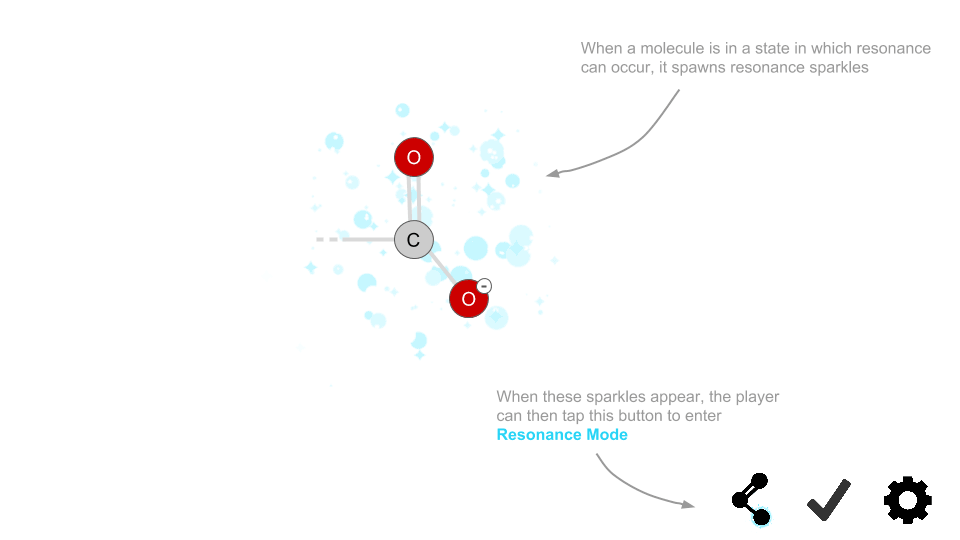Protect the Meeper
Protect the Meeper
What's My Title?

Mechanisms is a puzzle game that was created by Alchemie with support by Schell Games. The game is designed to help college students in organic chemistry classes practice fundamental concepts like resonance, arrow pushing, and relative acidity.
What's Mechanisms?
Project Overview
Game Details
- Game built for: Alchemie
- Genre: Organic chemistry practice tool
- Platform: Mobile
- Game Engine: Unity
- My roles: Project Director · Design Director
Logistics Breakdown
- Year: 2015
- Project Duration: 6 months
- Core Team size: 7

Gameplay
Process
Overview
-
The project's goal was to create a vertical slice proof-of-concept for the game. It was funded in part by the National Science Foundation through a Small Business Innovation Research (SBIR) Grant.
-
While the eventual target audience for this game will be organic chemistry students, this prototype was designed to present the concept of an organic chemistry game to chemistry professors.


My Contributions
-
I directed the project team of five developers: one producer, two programmers, one artist, and myself as the design and project director. In addition to design tasks, my overhead responsibilities included:
-
Working closely with Julie Winter, Alchemie's CEO, to translate her concept of an organic chemistry game into complete vertical slice to show to chemistry professors.
-
Providing documentation for Adam and Ben, the engineers, to help them iterate on both the back-end chemistry rules sets and the front-end user experience
-
Working with Bella, the team's artist, to develop overall look and feel, useful visual feedback and in-game animations, etc.
-
Meeting with organic chemistry experts to confirm that gameplay matched existing chemistry models.
-
Consulting with game designers and artists external to the project to get feedback on both educational content and gameplay elements.
-

A wireframe animatic of the first couple minutes of the game

Describing the physical actions a player would make in the game and the response by the molecule

Describing the flow and terminology of Resonance Mode, a more advanced part of the game

A wireframe animatic of the first couple minutes of the game
Design Documentation
-
My design tasks consisted largely of:
-
Gathering information about the educational content and gameplay direction from the team, subject matter experts, and other stakeholders
-
Using that info to develop design docs like wireframes, animatics, and flow diagrams for the team
-
Working with the team to use the design docs to build a series of playable prototypes
-
Organizing playtests for the prototypes
-
Using players and SME feedback to iterate on our prototypes
-
Using information from completed prototypes to help the team build the final set of levels and tutorials for the proof of concept
-
-
Designs I provided for the team include:
-
Back-end design: for a given organic chemistry puzzle, what moves the player can make? Once they make that move, was it correct, improbable, or impossible in the context of the puzzle? Given each of those cases, what should the game's response be?
-
Player input and affordances: What gameplay elements can the player move or interact with? Where can the player get more information? How can we improve the gamefeel?
-
Tutorialization: What needs to be tutorialized and how are we going to do it? What do we assume players in the target audience know going into the game?
-
Grading: What puzzle answers were correct and why? How we show the results? How we suggest improvement?
-
Visual feedback: Does the player know whether their move is a good one? Do they know why the game responded in the way that it did? How can we make the feedback visually appealing?
-
Audio feedback: What audio cues do we use and why? Does the audio help the player learn more about the experience? How do we keep it from getting repetitive over time?
-






Challenges
-
None of the members of the development team began the project with a strong background in organic chemistry. We worked very closely with Julie Winter (Alchemie's CEO) and her colleagues in academia to make sure that all of our design decisions were chemically sound.
-
The rules of organic chemistry are complex and extremely dependent on context. As non-experts, this made the task of designing the back end particularly difficult. We went through several iterations of simplified rule sets to be sure that any move that a player made to make or break a bond correctly modeled organic chemistry.
-
There is a wide range of opinion as to how to model different aspects of organic chemistry, which elements are important to teach, and what order to teach them in. Even within the constraints of three puzzles, we had to put a lot of thought into which concepts to incorporate into gameplay and which to leave out to simplify the model.
-
Since the target audience for this phase of the project was chemistry professors, it was important to focus on translating organic chemistry into gameplay in a way that made sense with their curricula. This made it difficult to get feedback about the educational aspects from non-experts; we deliberately left out the scaffolding that we knew that professors didn't need, which made the game difficult to play without a strong chemistry background.
